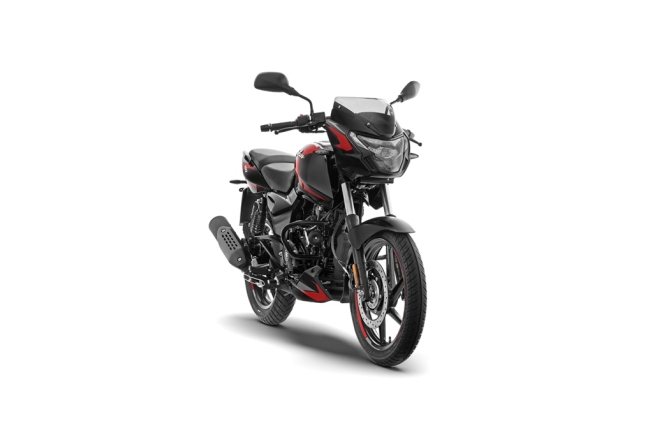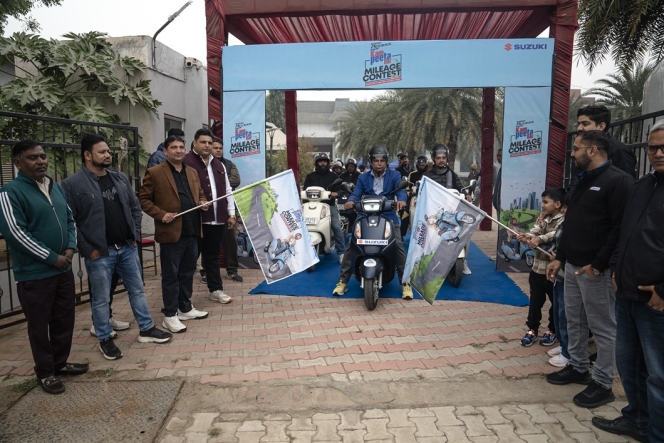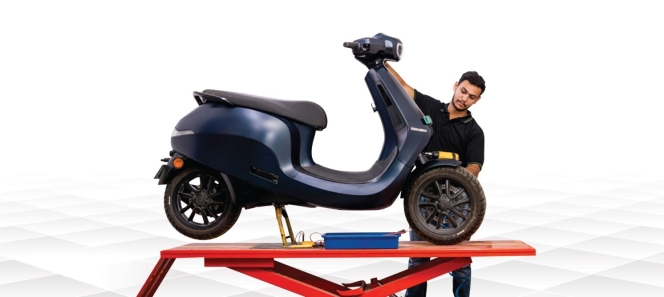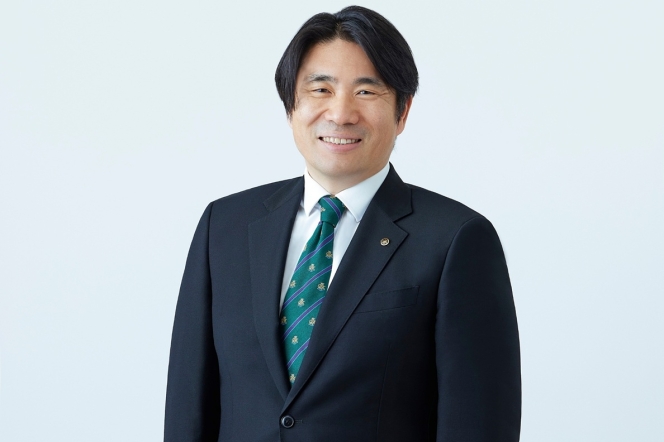India’s Electric Two-Wheeler Thrust
- By Aditya Gowda
- August 14, 2021

July 2021 was a month of much activity and announcements in the Indian electric two-wheeler industry. Much of it had to do with the announcement of Phase II of FAME II scheme by the Central Government, which seemed to favour the early adoption of electric two- and three-wheelers. Many states followed suit with a new or revised electric vehicle (EV) policy. Of the opinion that the new FAME II scheme will disrupt the two-wheeler market in India, Tarun Mehta, CEO and Co-founder, Ather Energy, said, “They could clock sales of over six million units by 2025.”
The increase in maximum subsidy limit from 20 to 40 percent in the case of initial acquisition cost has enabled electric two-wheeler OEMs to reduce the sticker price of their products a good deal. The arrangement is such that the government will reimburse the OEM the subsidy amount after it has sold the vehicle to its customer, the actual beneficiary. “Lowering the prices of electric scooters will help to persuade more riders to switch to an electric one,” said Jeetender Sharma, MD and Founder, Okinawa Autotech. Sohinder Gill, Director General, Society of Manufacturers of Electric Vehicles (SMEV), informed, “The Gujarat State Government’s subsidy of INR 20,000 for electric two-wheelers that cost up to INR 150,000 has a potential to make it an EV hub,” Referring to the Maharashtra EV policy, which provides a subsidy of INR 10,000 on an electric two-wheeler, Nagesh Basavanhalli, MD and CEO, Ampere Vehicles, remarked, “The policy will not only boost electric vehicle growth, it will also provide employment.”
Helping electric two- and three-wheeler proliferate, the Phase II of FAME II and the EV policies of various states, it is clear, are looking at attracting investments and employment opportunities. These policies are also looking at creating a self-sufficient (Atmanirbhar Bharat) ecosystem of fundamental manufacture – that of chips, battery cells, motors and controllers. India has the software but needs the hardware, mentioned a source. He pointed at Ola’s high voltage campaign for its e-scooter, and said that the real slog will start only after the plant is up and running. It will begin when the e-scooter hits the road and starts competing against numerous others. Stressing on the presence of equally capable global, regional and local players, he explained, it is as necessary to understand the psyche of the market as much as it is to have the technology and the money to invest. Carrying with them the image of being premium and technologically superior, the Ather e-scooters have been attracting attention for some time.
Its dealer from Maharashtra mentioned that awareness for electric two-wheelers is growing and the number of footfalls after the fuel price hike. Range anxiety, however, remains to be a challenge, he said. Across segments – Ather e-scooters are said to be premium offerings compared to others with a price premium of roughly INR 30,000 to INR 40,000. Range anxiety is a factor that is proving challenging to many. Especially along with the higher initial acquisition cost. The innovative technological achievements like a detachable battery pack that could be taken out for charging at home or in the office are helping to an extent. They are also highlighting the efforts of the electric two-wheeler OEMs to understand the dynamic regulatory and market requirements.
Investments in technology involving materials and sciences are yielding better products no doubt. With the emergence of demand for commercial-use electric three-wheelers, companies like Komaki are quick to respond. Its XGT CAT 2.0 e-bike with a 350 kg payload is designed to address the needs of e-commerce logistics companies like Delhivery and Ekart, and aggregator platforms like Swiggy and Zomato. Looking at maximum uptime and reliability in the last-mile space, commercial electric three-wheeler users, tasked with attacking as many pin codes and as many customers as they could in a strict time stipulation, are keen to control costs as well as reduce their carbon footprint. Leveraging IoT and AI to analyse data, they are choosing between Lithium-ion powered and lead-acid battery-powered electric two-wheelers. (MT)
Bajaj Auto Intros Updated Pulsar 150 Range At INR 108,772
- By MT Bureau
- December 24, 2025

Bajaj Auto, one of the leading two-wheeler and three-wheeler manufacturers, has updated its popular Pulsar 150 motorcycle range. The updates include the introduction of LED headlamps and LED blinkers to the model, which the company states is intended to improve visibility and usability while maintaining the vehicle's design identity.
The updated range is available at the following ex-showroom Delhi prices – Pulsar 150 SD at INR 108,772, Pulsar 150 SD UG at INR 111,669 and Pulsar 150 TD UG at INR 115,481.
The motorcycle retains its frame and stance, though Bajaj has introduced new colour options and graphics. The Pulsar 150 continues to utilise DTS-i (Digital Twin Spark-ignition) technology, which uses two spark plugs to ignite the air-fuel mixture in the combustion chamber, intended to improve combustion efficiency and power output.
The update focuses on integrating modern lighting components into the existing platform, which originally established the sports motorcycling segment in India.
Sarang Kanade, President, Motorcycle Business Unit, Bajaj Auto, said, “The Pulsar 150 has defined performance motorcycling for generations. With this update, we have preserved its classic character while thoughtfully adding modern LED lighting, ensuring the Pulsar 150 remains relevant, recognisable and Definitely Daring.”
Suzuki Motorcycle India Conducts Access Mileage Contest In Palwal
- By MT Bureau
- December 24, 2025

Suzuki Motorcycle India (SMIPL), the subsidiary of Suzuki Motor Corporation, Japan, held a mileage contest for the Suzuki Access scooter in Palwal. The event involved 35 participants, including current owners and prospective buyers, to test the fuel efficiency of the scooter under city driving conditions.
The initiative is part of the brand’s ‘Pickup Bhi, Mileage Bhi’ strategy, which focuses on balancing engine performance with fuel economy and build quality.
The event was organised in partnership with RV Suzuki in Palwal. The participants, all of whom had purchased their scooters within the last year, followed a specific testing protocol: a designated 20-kilometre circuit on city roads, scooters were operated on a full tank, then refilled at the end of the journey to calculate the exact fuel consumed. Potential customers were provided with test rides and the opportunity to interview existing owners regarding reliability and comfort.
Deepak Mutreja, Vice-President, Sales & Marketing, Suzuki Motorcycle India, said, “The Suzuki Access Mileage Contest places a strong focus on fuel efficiency, bringing our brand promise of ‘Pickup Bhi, Mileage Bhi, Shandar Quality Ke Sath’ to life. By riding on city roads, participants experience the scooter’s real-world mileage. Along with mileage, customers also get to experience the quality and reliability that have made the Access a trusted choice of over 6 million customers. We appreciate the participation from customers in Palwal. We will continue to extend such on-ground initiatives to more cities across India, allowing customers to connect closely with out two-wheelers and witness their performance firsthand.”
The company intends to expand these on-ground initiatives to additional cities across India to demonstrate the performance of its two-wheeler portfolio in local environments.
Ola Electric Launches Hyperservice Centres With Same-Day Service Guarantee
- By MT Bureau
- December 23, 2025

Bengaluru-based electric vehicle maker Ola Electric has expanded its Hyperservice initiative by launching dedicated centres that offer a same-day service guarantee for eligible customers at no extra cost. The company will upgrade its existing service infrastructure into Hyperservice Centres, beginning with a facility in Indiranagar, Bengaluru.
The expansion is intended to reduce service lead times and increase transparency through a digital workflow.
The Hyperservice Centres include several facilities for customers and technical upgrades for vehicle maintenance. The waiting area includes a lounge and Wi-Fi connectivity for customers. Real-time visibility of the servicing stages is provided via the Ola Electric app. Going forward, the company plans to upgrade selected centres across India in the coming weeks.
Ola Electric has also transitioned Hyperservice into an open platform. This move makes the company’s spare parts, diagnostic tools, and training modules available to independent garages, mechanics, and fleet operators.
Under this model, parts can be purchased directly through the Ola Electric app or website. This is intended to allow garages and customers to access components without the use of intermediaries.
“As part of the ongoing service upgrade we are reimagining many of the fundamental aspects of the service experience. We see it as a core part of Ola ownership, and it needs the same level of innovation as the product itself. With Hyperservice Centres, we are setting a new benchmark – same-day service guarantee. At no extra cost for any customer. This is about using technology, process redesign and scale to remove friction and give every Ola customer a faster, simpler and more transparent service experience,” said the company in a statement.
The company has rolled out an in-app service appointment feature nationwide. The tool allows users to select service slots, track the status of their vehicle, and manage maintenance requirements within the unified platform to replace traditional booking methods.
Hajime Aota Appointed Chairman Of Yamaha Motor India Group
- By MT Bureau
- December 23, 2025

India Yamaha Motor, one of the leading two-wheeler manufacturers in the country, has announced the appointment of Hajime Aota as the Chairman of Yamaha Motor India Group, effective from 1 January 2026. He is set to succeed Itaru Otani, who held the position since November 2024.
The appointment comes as Yamaha continues its focus on the premium segment and digital integration within the Indian two-wheeler market.
Aota joins the Indian operations with experience in corporate strategy, planning and venture business development. He has held leadership roles in Japan, the United States and the United Kingdom.
Prior to this role, Aota served as Executive Officer at Yamaha Motor Co, and Chief General Manager of the Corporate Strategy Centre at the global headquarters in Japan. In these positions, he managed corporate strategy, sustainability and digital transformation.
He has also worked as Chairperson of Yamaha Motor Ventures & Laboratory Silicon Valley (YMVSV) overseeing investments in robotics, transportation, fintech and health technologies. He has also contributed towards Yamaha Motor Group’s long-term growth strategy.
Aota is a graduate of Keio University and holds a qualification from the Program for Leadership Development at Harvard Business School.
Hajime Aota, said, “I am very excited to begin my journey in India, one of the world’s most dynamic and diverse two-wheeler markets. The rapidly evolving aspirations of Indian consumers, especially the youth, align strongly with Yamaha’s focus on premium products, innovation, and a customer-centric approach. Leading Yamaha in India is a significant responsibility, and my focus is on strengthening the brand by delivering products that seamlessly combine Yamaha’s global engineering excellence with the evolving needs of Indian riders. I look forward to working closely with our teams and partners to drive sustainable growth and reinforce Yamaha’s presence in this important market.”






Comments (0)
ADD COMMENT